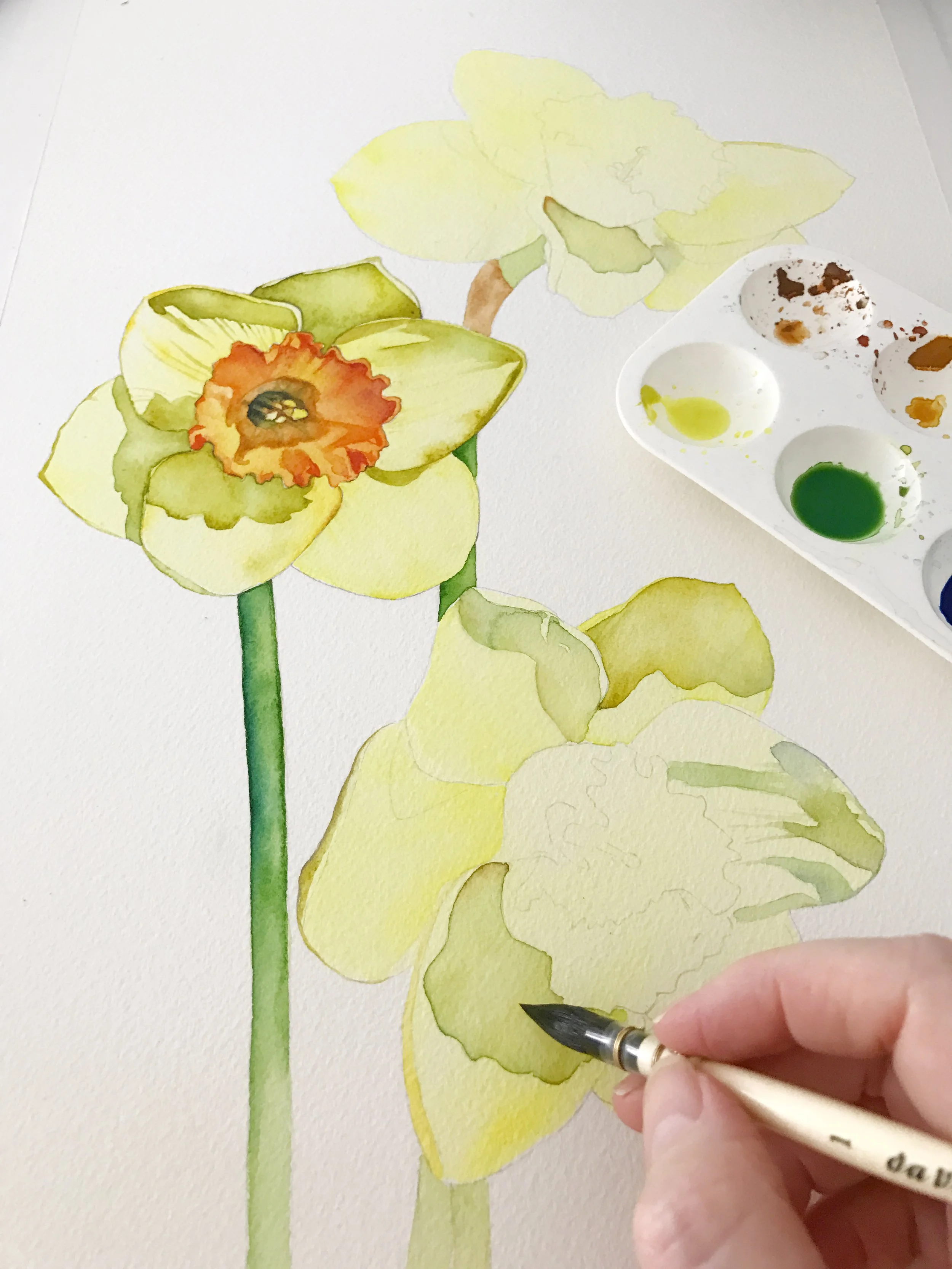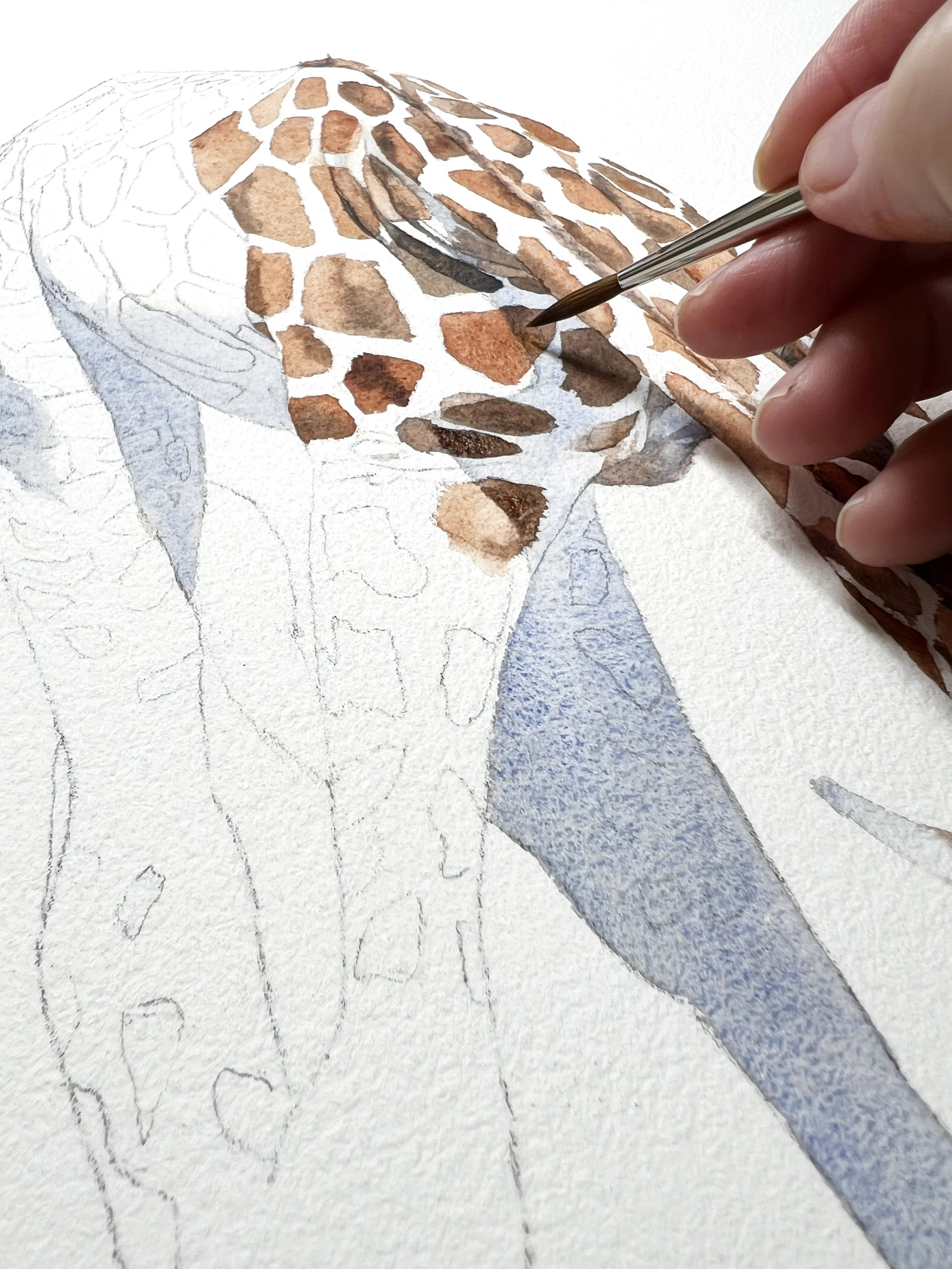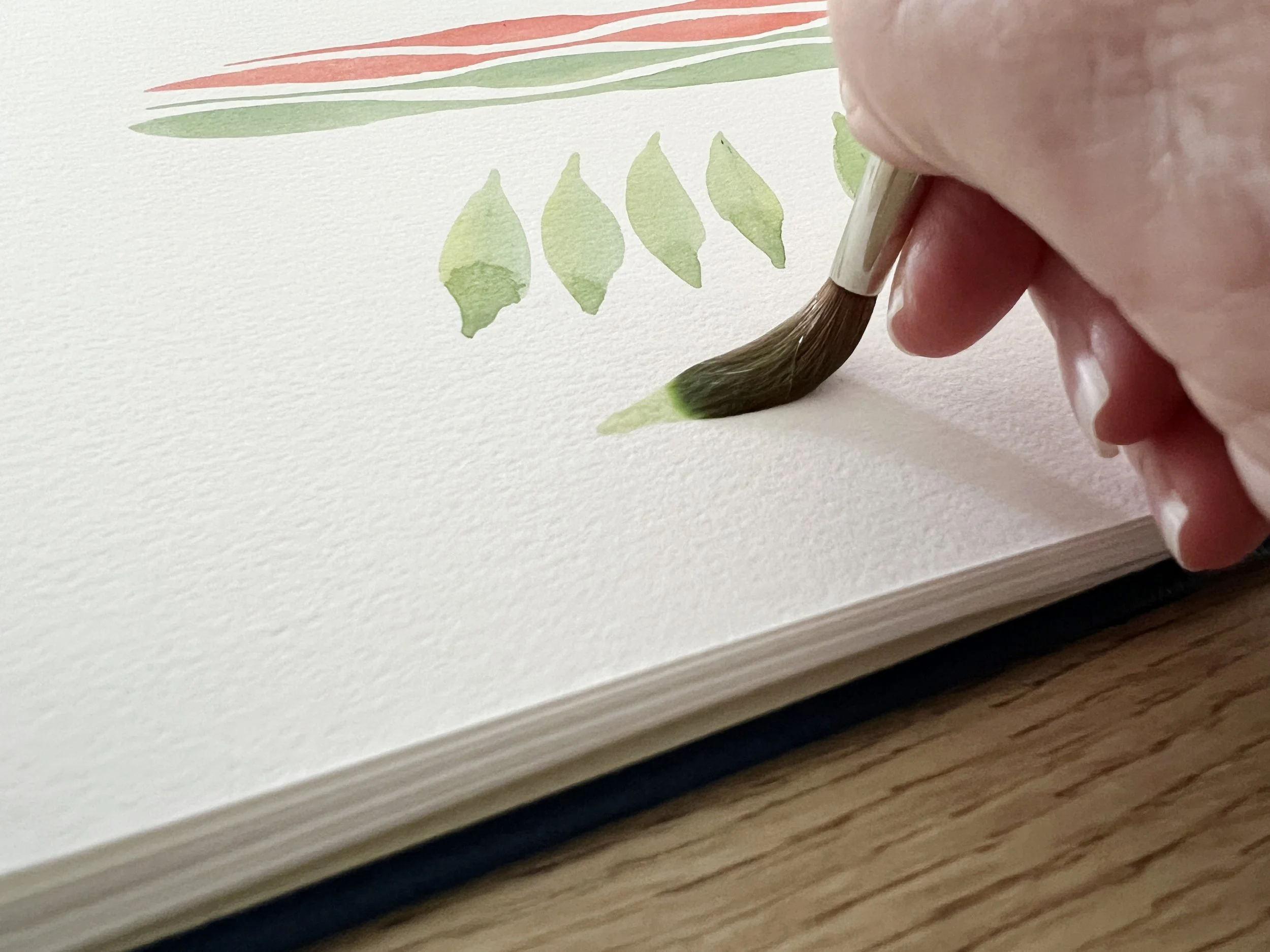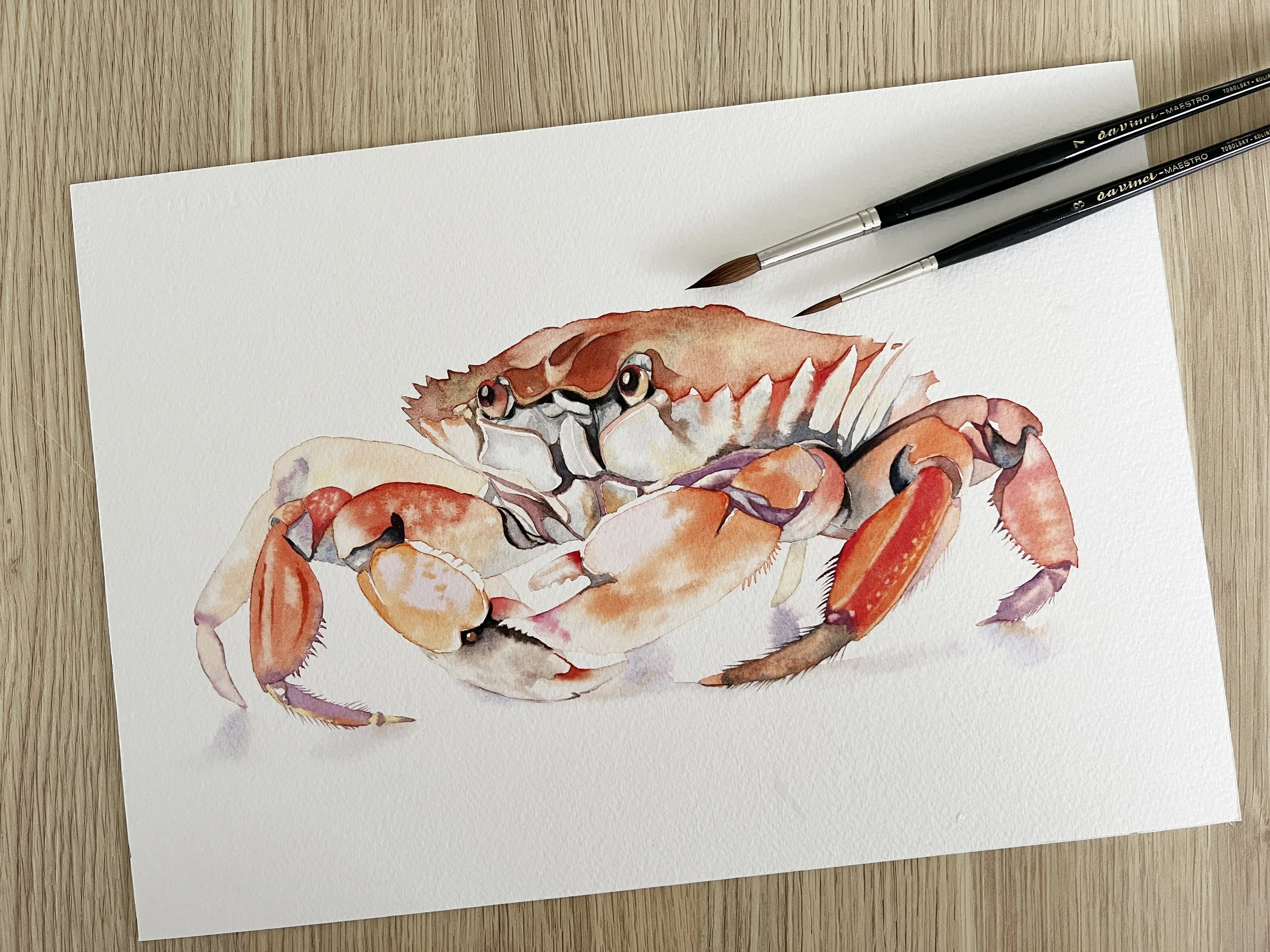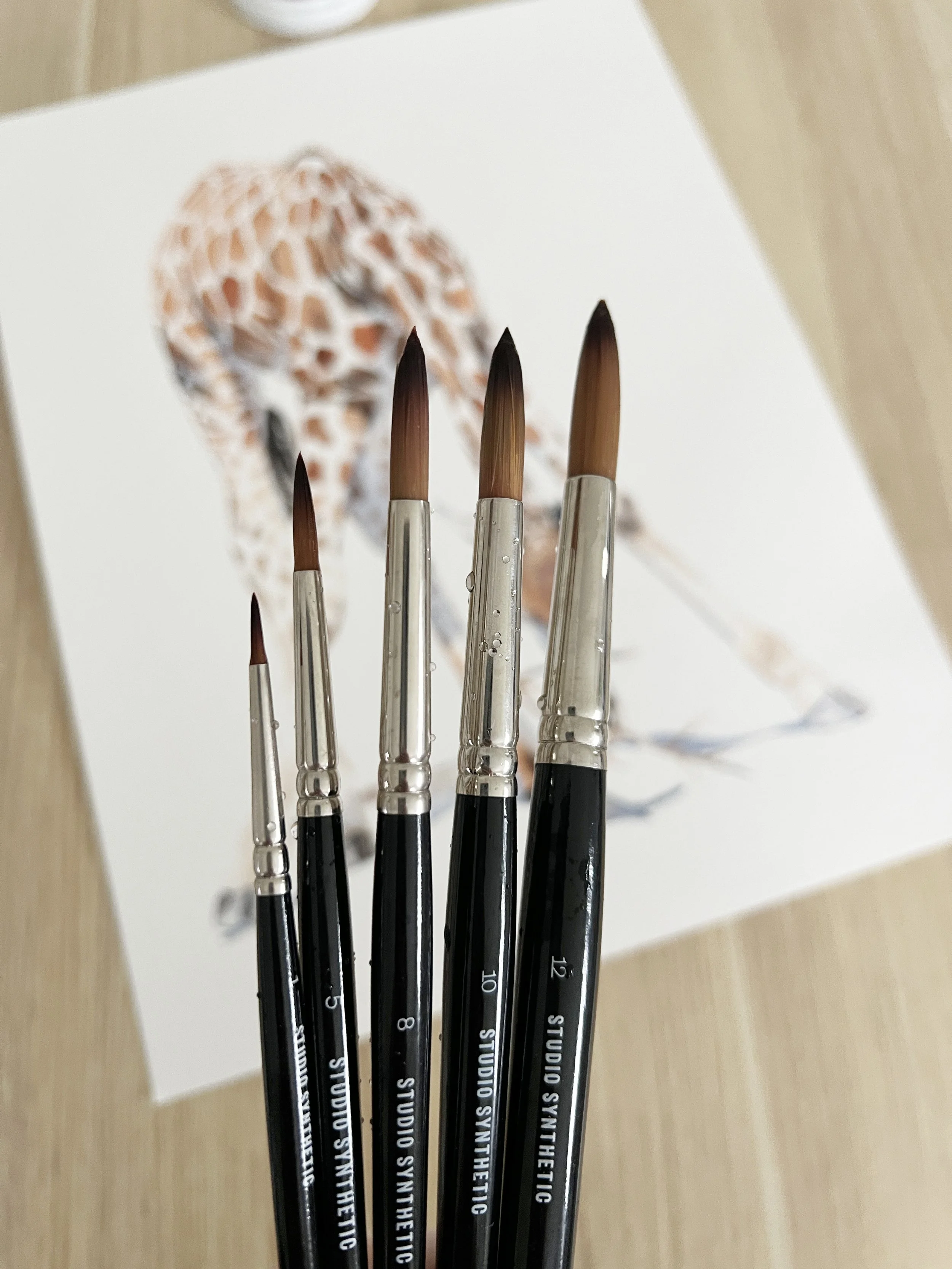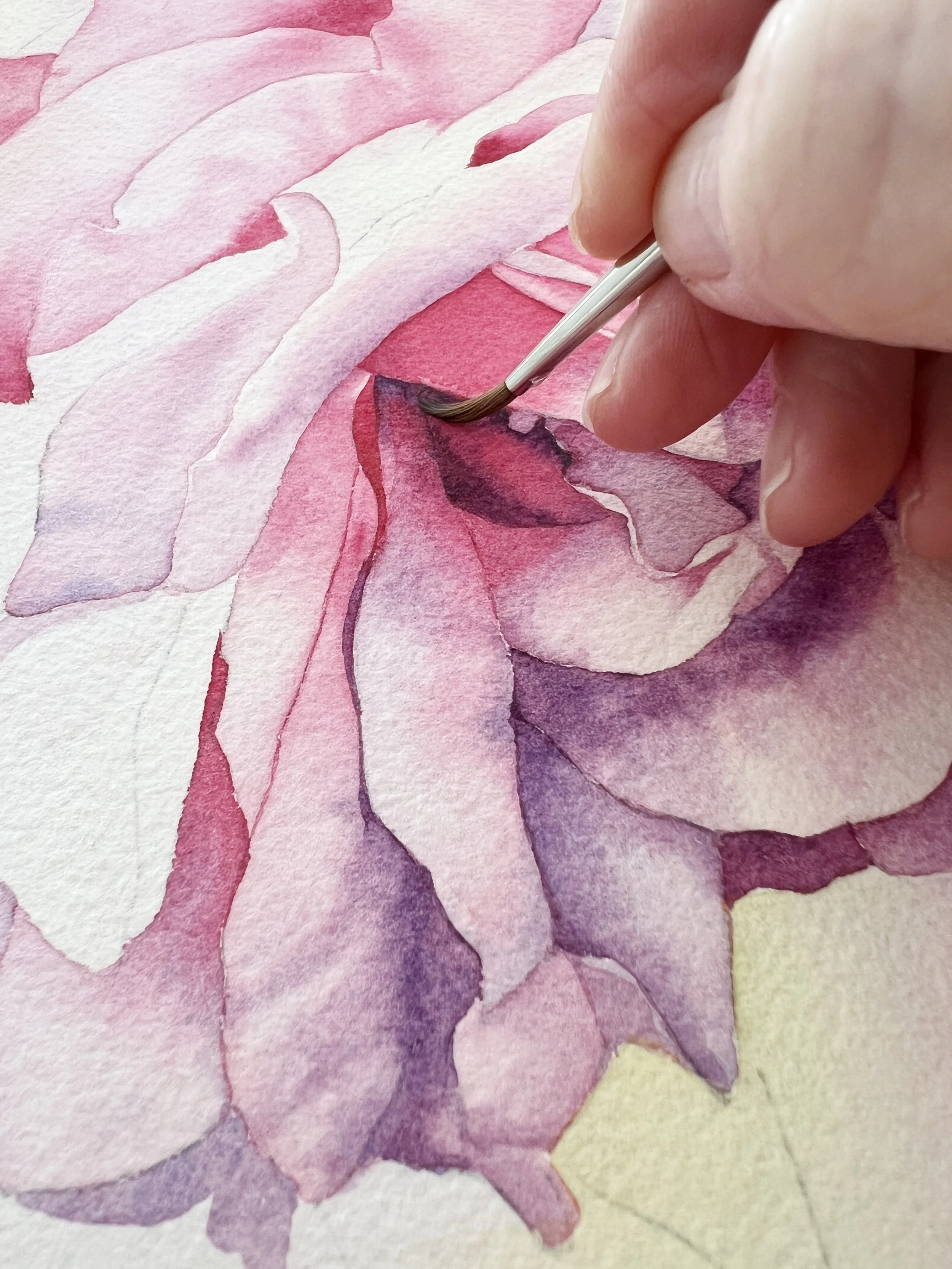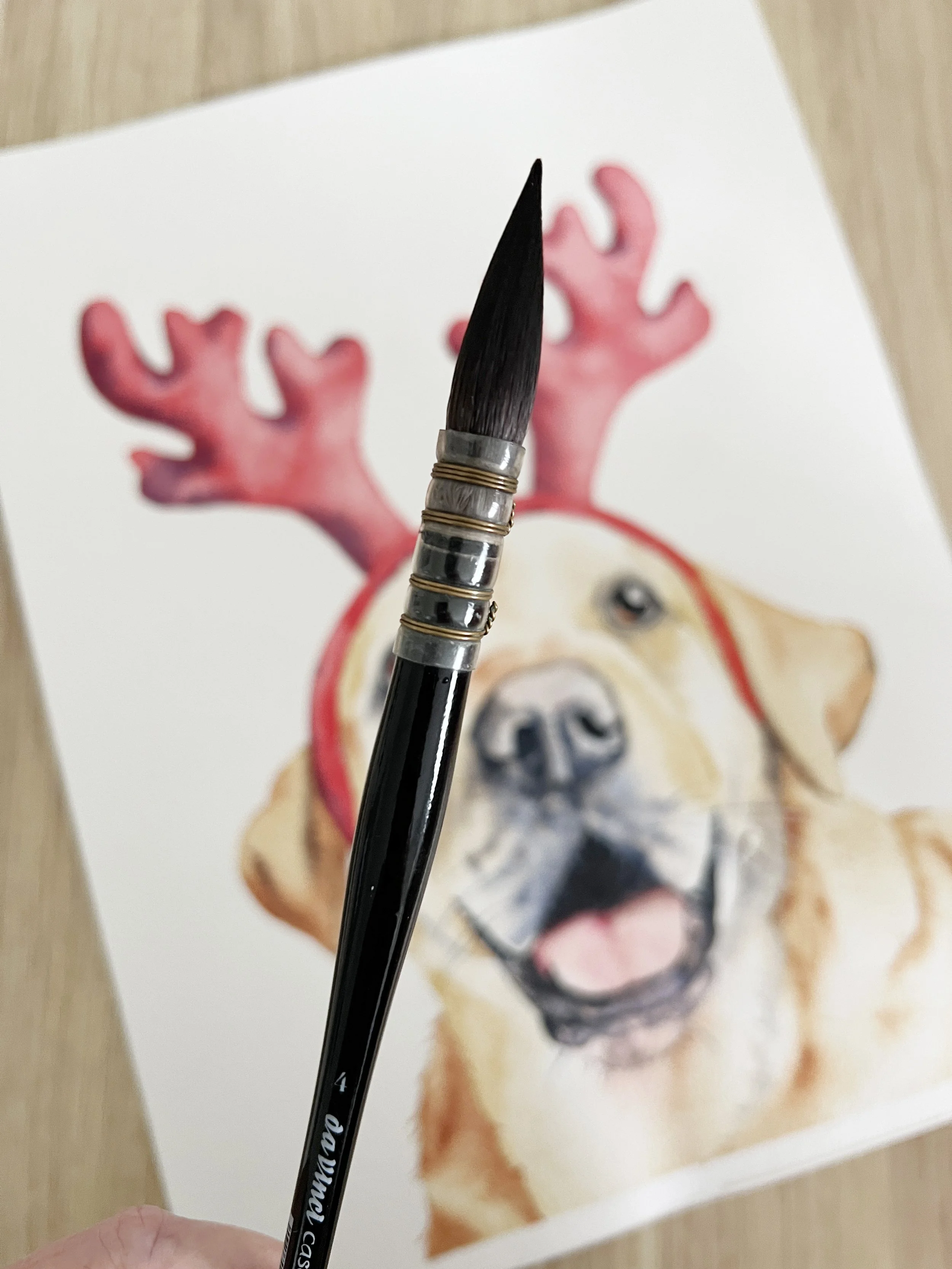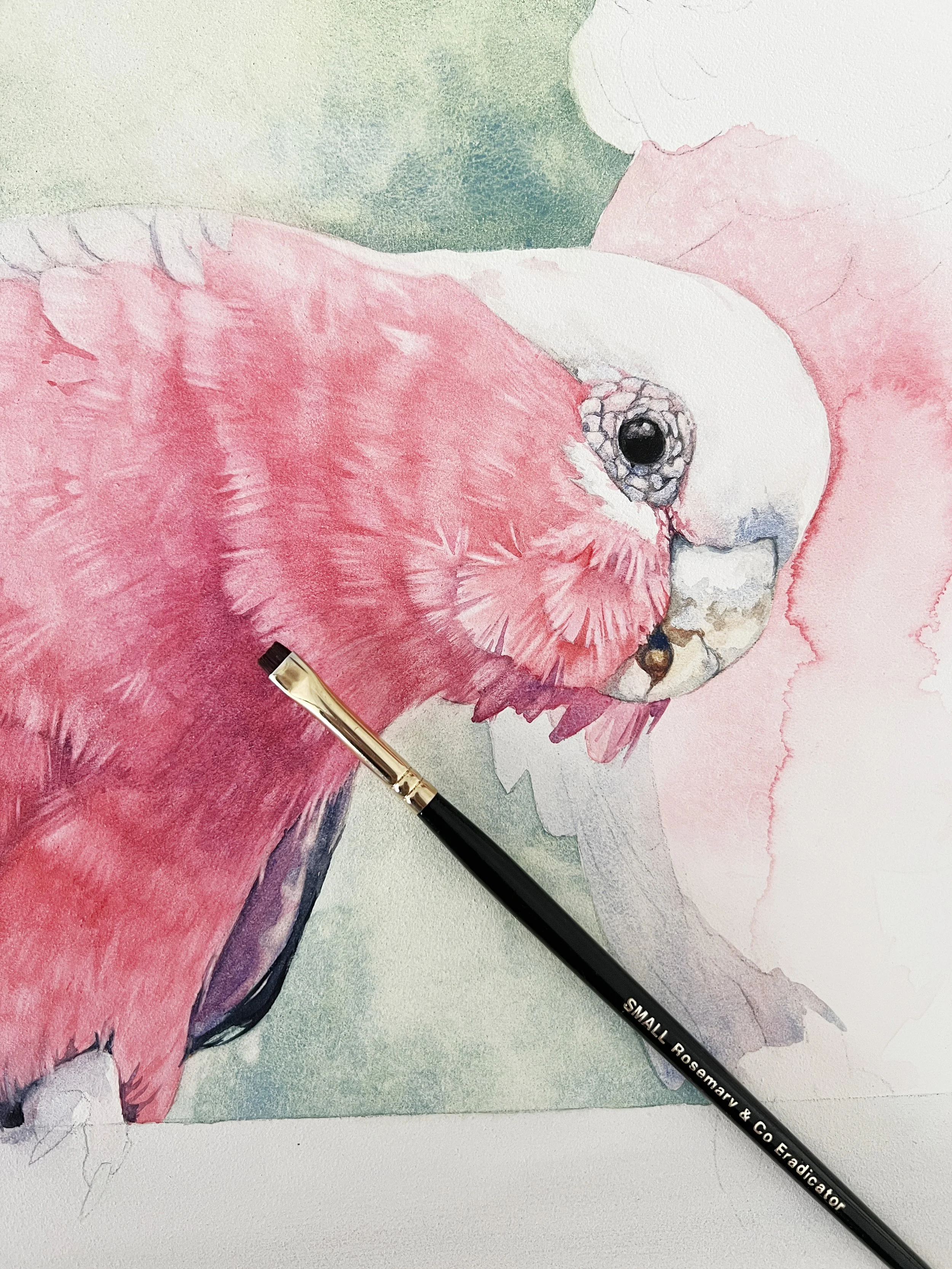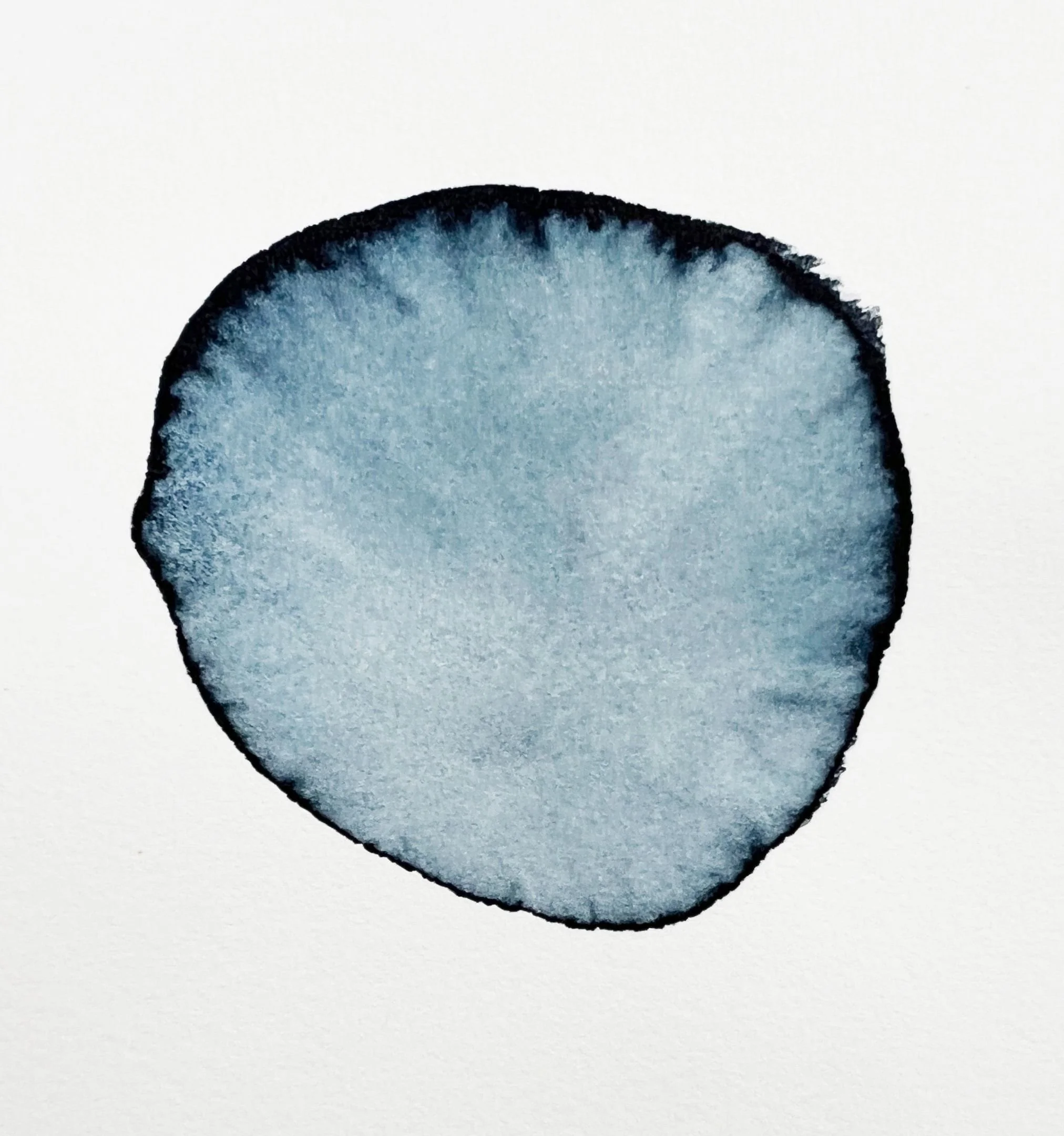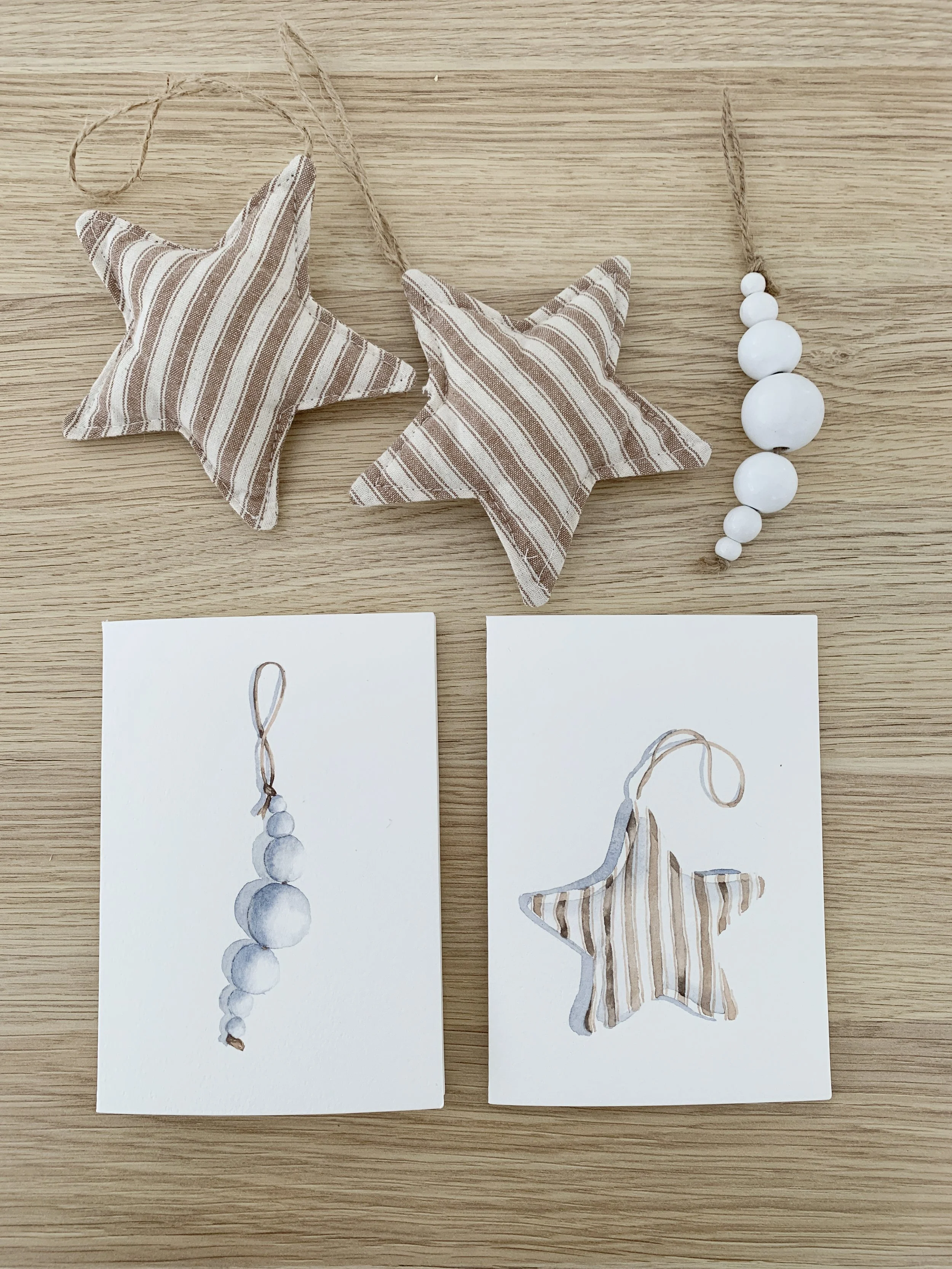Does Brush Size Matter in Watercolour?
Here's what you need to know.
Daffodil painting - watercolour and brush
Choosing the right brush size in watercolour painting can make a huge difference to your results. The size of your brush affects how much water and pigment it holds, how much control you have, and the overall look and feel of your painting. In this post, I’ll walk you through why brush size matters, how to choose the right one for different techniques, and which sizes I personally recommend.
There’s something so rewarding about watching my students grow as painters. Each painting tells its own story of curiosity, courage, and those little discoveries that quietly change the way we paint forever.
Recently, while looking through some of my students’ paintings, I noticed something interesting. A few of them were struggling with uneven washes and edges that looked a little soft or overworked. As I studied their work, it dawned on me that many of them were simply using brushes that were far too big for the level of control they needed.
Why Brush Size Matters More Than You Think
Watercolour brush size affects far more than just how much paint you can lay down. It determines how you handle water, how your hand moves, and ultimately, how your painting feels.
A large brush holds a generous amount of pigment and water. That’s wonderful for laying in broad, smooth washes such as skies, petals, or backgrounds, and it encourages confidence. There’s a beautiful looseness that comes when you have to commit to a stroke.
But if your brush is too large for the area you’re painting, control becomes difficult. You might find the paper flooding with water or edges merging before you’re ready. Suddenly, that delicate petal turns into a soft blur.
On the other hand, a brush that’s too small can make your painting feel tight and fussy. Beginners often reach for small brushes thinking they’ll have more control, but the truth is, those tiny strokes can lead to overworked, patchy areas.
The secret is finding the balance is choosing a watercolour brush that gives you enough paint to move freely, but enough control to stay intentional.
Finding the Sweet Spot
So what’s the solution?
For most painters, a good round watercolour brush with a fine point is a wonderful middle ground. It holds plenty of paint for washes but still gives you control for detail. It’s the brush I reach for most often. I can lay in a background wash, then, without changing brushes, use the tip to paint the veins on a petal or define a shadow.
If you’re unsure, experiment! Try painting the same subject with three different brush sizes. Notice how the water behaves, how the pigment spreads, and how your hand moves. You’ll quickly start to understand how each size affects your results.
Tip: One of my favourite exercises is to paint a single leaf using three different watercolour brush sizes. With a small brush, notice how many strokes you make. Then try again with a medium and a large brush. You’ll see instantly how your marks and your mindset change.
I have linked to a great blog post here which offers a few simple exercises for more brush control.
How to Choose the Right Brush for the Job
When you’re deciding what size or shape to use, think about what your painting needs:
Round brushes are the most versatile. Use the belly of the brush for washes and the point for details.
Flat brushes are perfect for crisp edges and structured shapes.
Mop brushes excel at soft, even washes and blending large areas.
Rigger brushes are your friend for thin lines, stems, and fur details.
Before you start painting, look at the area you’ll be working on. If it’s smaller than your brush’s belly, downsize. If it’s larger, size up. With practice, you’ll intuitively know which watercolour brush to reach for.
The Sizes I Recommend for Beginners
If you’re just starting out, here’s a simple, versatile range of watercolour brush sizes that will take you far:
Size 2 or 3: Perfect for fine details like veins on petals, tiny highlights, or the edges of leaves.
Size 5 or 7: A fantastic all-rounder ideal for most subjects, whether you’re painting flowers, birds, or landscapes.
Size 8 or 10: Great for broader areas and looser washes without losing control.
For most beginners, I’d suggest starting with a size 3 and a size 7 round brush. You can accomplish a lot with those two. Once you’re comfortable, add smaller and larger brushes to your collection as your style develops.
Brush Hair: Natural vs Synthetic
When I first started painting, natural hair brushes like Kolinsky sable hair brushes were the gold standard. The real hair holds a lot of water, comes to a fine point, and lasts for years with good care.
However, modern synthetic brushes have improved dramatically. The synthetic fibres are affordable, cruelty-free, and perform wonderfully, especially for beginners. They have a good snap to them, short handles, come in many shapes and are very forgiving. Many synthetics (like my Jackson’s Series 505) mimic the behaviour of natural hair remarkably well.
If you’re new to watercolour you can start with synthetics. A synthetic hair watercolour brush holds lots of water, offers good value for money and will serve you well when creating beautiful watercolour paintings. You’ll get consistent results in your watercolour paintings and can experiment freely without worrying about wearing out an expensive brush.
A Note for Beginners
If you’re just starting out, you might find yourself drawn to smaller brushes because they feel safer. It’s natural to think that a tiny brush gives you more control. But often, the opposite is true. Small brushes force you to make too many little strokes, which can lead to overworking your painting. Larger brushes encourage you to simplify, to suggest instead of outline.
It’s all about control, intent, and understanding your materials. Once you learn to manage the water in your brush, size becomes a creative choice, not a limitation.
My Favourite Brushes and Why I Love Them
Over the years, I’ve tried more brushes than I can count, but there are a few that I consider to be the best watercolour brushes for me that I return to again and again, not just because of how they perform, but how they feel in the hand.
Jackson’s Studio Synthetic Series 505 – My Signature Set
The Jackson’s Studio Synthetic Series 505 brushes are my favourites. They hold water and colour beautifully, spring back into shape with ease, and have a fine point that makes them incredibly versatile. They’re also affordable while still offering professional quality, which is something I really value. They’re suitable for all watercolour techniques.
Da Vinci Brushes
Da Vinci’s craftsmanship is outstanding. Their Maestro Series 35 brushes have a luxurious spring and precision that makes painting fine details a joy.
The Da Vinci Maestro brushes, series 35. These are beautiful brushes to work with.
The Casaneo Mop #4 (series 498) is fantastic for looser washes and petals that need a softer edge.
And if you love a synthetic-natural blend, the Colineo Series is beautifully balanced. They feel just like natural hair, but they’re vegan and durable.
You can read more about the brushes I use here.
Da Vinci Casaneo Mop brush is a useful watercolor brush to add to your supplies.
Rosemary & Co. Eradicator Brush
Every artist makes mistakes and this little brush is a lifesaver. The Eradicator Brush can lift pigment with precision, allowing you to soften edges or lighten an area without damaging the paper. It’s not one you’ll use constantly, but when you need it, it’s magic.
Caring for Your Brushes
Good brushes can last for years if you look after them. Rinse them thoroughly after each session, reshape the tips while they’re damp, and store them flat. Never leave them sitting in water because it weakens the glue in the ferrule and damages the bristles.
A little care goes a long way in keeping your brushes responsive and reliable.
Common Mistakes When Choosing Brush Sizes
Even experienced painters slip up when it comes to brush choice. Here are a few things to watch for:
Using a brush that’s too small.
It might feel safer, but small brushes can make your paintings look overworked. They force you to use too many strokes and reload constantly, breaking the flow.
Using a brush that’s too big.
A large brush can flood your paper if you’re not careful. It’s great for washes, but tricky when painting tight spaces or delicate edges.
Ignoring how much water the brush holds.
Some natural hair brushes carry more water than synthetic ones, which can surprise beginners. If you lose control of the paint you might just need a smaller brush or a synthetic option.
Using the wrong shape for the area.
Sometimes the issue isn’t size but shape, for example, using a mop for crisp edges or a rigger for broad washes. Match the shape to the job for the best results.
Final Thoughts
Brush size truly matters, but not in the way most beginners think. It’s less about always finding the perfect size and more about learning how each size behaves, how it holds water, how it moves, and how it helps express your style.
Next time you paint, take a moment to really notice your brush. Feel how it sits in your hand, how the bristles carry the water, and how it glides across the paper. Whether it’s a size 2 or a size 12, the real magic happens when you understand how to let it work with you, not against you.
Every painting teaches you something new, sometimes about colour, sometimes about technique, and sometimes it’s as simple as discovering that the right brush can change everything.
Enjoy painting, trust your instincts, and most importantly, keep painting.
If you are interested in learning to paint in watercolour, I have hundreds of online, voiced over watercolour tutorials for all skill levels.
